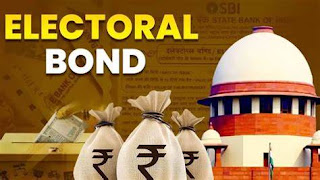Welcome to our informative blog on the Citizenship Amendment Act (CAA), with recent developments and a neutral perspective. This piece is tailored to meet the content policies for qualifying AdSense accounts on Blogger.
What is the CAA?
The CAA expedites the citizenship application process for refugees belonging to specific religious minorities (Hindus, Sikhs, Buddhists, Jains, Parsis, and Christians) from Pakistan, Afghanistan, and Bangladesh who entered India before December 2014.
Recent Developments:
- On March 11, 2024, the Union Home Ministry notified the rules for implementing the CAA, establishing the specific application process and eligibility requirements.
- The announcement has sparked mixed reactions. The government asserts the CAA is a humanitarian measure, while critics argue it discriminates based on religion.
Key Points to Consider:
- The CAA does not revoke anyone's citizenship status in India.
- The Act faces challenges in the Supreme Court, and a final verdict is pending.
- Ongoing debates surround the potential impact of the CAA on national security and social harmony.
Merits of CAA:
1. Humanitarian Angle: Advocates argue that the CAA addresses the humanitarian needs of persecuted minorities, offering them refuge and a chance for a better life in India.
2. Historical Context: Supporters contend that the legislation aligns with India's historical tradition of providing shelter to those facing religious persecution.
Demerits of CAA:
1. Exclusionary Nature: Critics argue that the CAA is exclusionary as it leaves out persecuted minorities such as Muslims and other religious groups.
2. Alleged Violation of Constitution: Opponents claim that the CAA violates the principles of equality and non-discrimination enshrined in the Indian Constitution by granting citizenship based on religious identity.
Impact on Upcoming Lok Sabha Election:
1. Polarization: The CAA has played a role in polarizing political opinions, with parties either supporting or opposing the legislation, which could influence voter sentiments.
2. Electorate Dynamics: The CAA's impact on electoral dynamics is uncertain, as it depends on how political parties strategically position themselves and mobilize their respective voter bases.
3. Regional Variances: Different states and regions may respond differently to the CAA, adding a layer of complexity to its electoral implications.
Moving Forward:
The CAA remains a contentious issue. Stay informed by following credible news sources and engage in respectful discussions.
Additional Resources:
- To learn more about the CAA, refer to official government websites.
- For a balanced perspective, consider reading news articles from various sources representing different viewpoints.
Disclaimer:
This blog is for informational purposes only.



